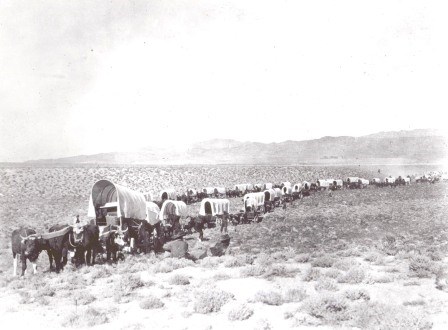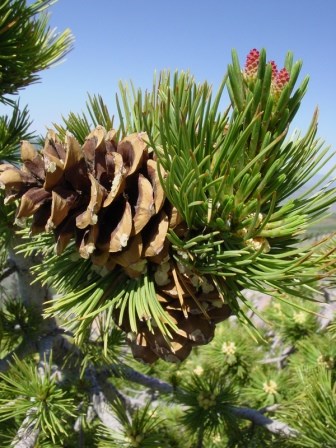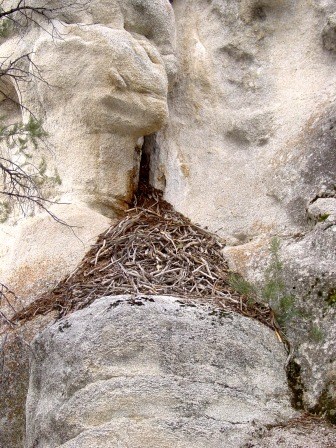
Ecological History Learn about the Ecological History of City of Rocks. Dr. Lesley Argo-Morris has published a study that describes the changes in vegetation along the California Trail corridor within the Reserve. From approximately 1840 to the present, the focus is upon the period of peak pioneer travel (1843-1869). __________________________________________________________________________________ 
NPS Photo Singleleaf Pinyon Pine (Pinus monophylla) Pinyon pine is a widely distributed pine that grows in the Intermountain region of western North America. It is a major indicator tree in the pinyon-juniper life zone. P. edulis is a short and scrubby tree that rarely reaches heights taller than 35 feet. Growth is very slow and trees with with diameters of 4 to 6 inches can be several hundred years old. It typically grows either in pure stands or with juniper. In addition to being very attractive, pinyon provides food and shelter for wildlife, such as the pinyon jay and many small rodents that depend on nuts within the cone. Native American tribes also valued the pine nut for its high oil and fat content. City of Rocks and Castle Rocks boast the largest forest of the single-leaf pinyon in Idaho, as well as the state champion tree. Because the parks are situated near the northern extent of the pinyon's range, few if any are found north of the Snake River in Idaho. _________________________________________________________________________________ 
NPS Photo Pack Rat Midden Pack rats, abundant in City of Rocks, collect vegetation from a range of about 50 meters in diameter, to create their nests. All water consumed by pack rats comes from the vegetation and results in a fairly viscous amber colored urine. The remaining liquid in the urine, excreted in the nest, evaporates and encases collected vegetation into hard midden. A sample from this midden is currently under study by a team from the University of Arizona and the U.S. Geological Survey, headed by Dr. Julio Betancourt. Dr. Betancourt believes this sample to be about 10,000 years old. This research is to determine what the climate was like in the past and how it has changed over time. Because middens are abandoned after a short period of time, they are uncontaminated "time capsules" of several decades of natural life, centuries, and millenia after they have occurred. _________________________________________________________________________________ |
Last updated: February 19, 2020
